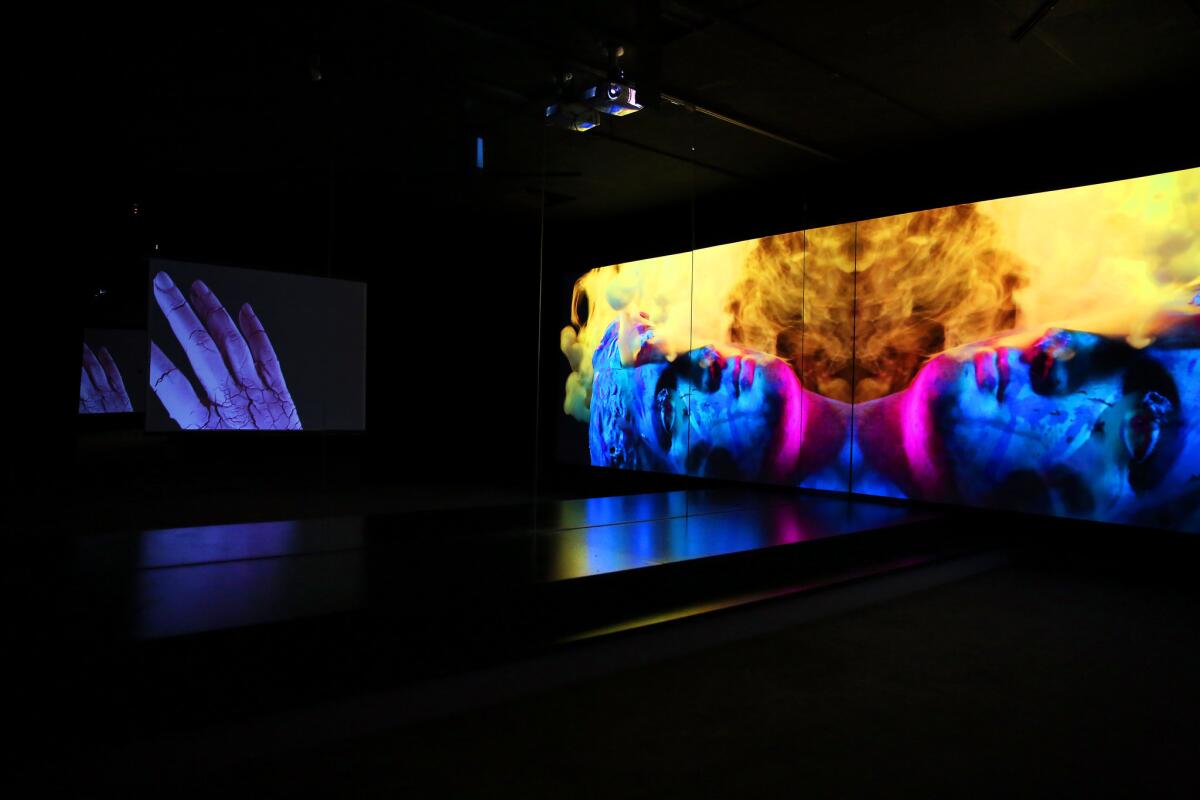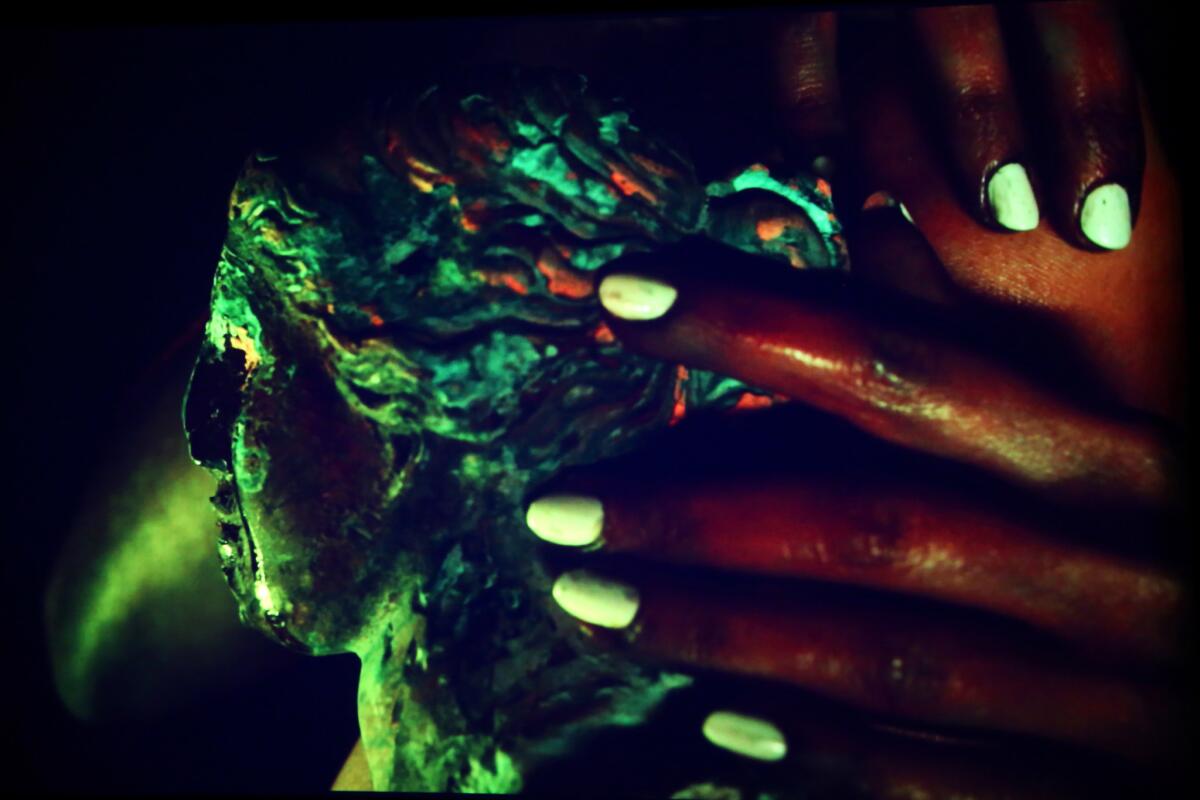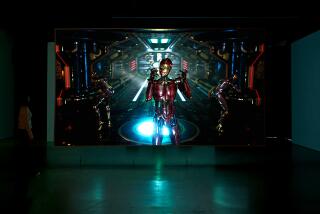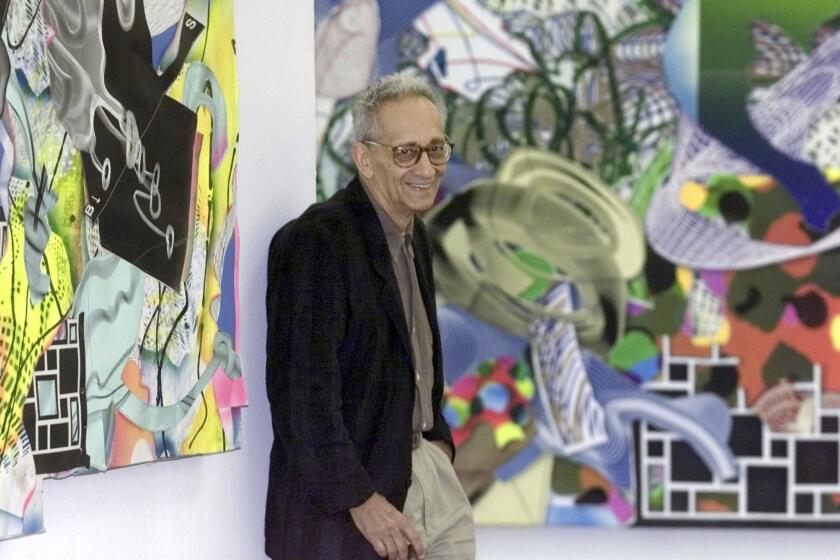Artist Julie Weitz breaks down ‘Touch Museum’ videos
The floor in the first gallery in Julie Weitz’s “Touch Museum” exhibition is lined with egg-crate foam. New-agey music filters through speakers. Weitz describes her intention with the room this way: “I wanted to alter your perception of time and space as soon as you entered. The foam is so light — I tell people they can take off their shoes — and the odd angles of the room. Some people have gotten dizzy. Mostly, it feels like you’re floating.”
What follows are Weitz’s descriptions of the inspiration behind several of the videos in her “Touch Museum” show at Young Projects Gallery.
On the video “Aftermath”: “I was inspired by ‘70s sci-fi movies, altering the physical materials even if I’m editing it in a more digital way. I swung the sculptures on chains and broke them apart, sprayed them with paint, filled them with smoke. These Greco-Roman sculptures are like ancient versions of modern-day avatars, this idealized form of the self. And I wanted to break apart that idea in some way.”
SIGN UP for the free Classic Hollywood newsletter >>

Pictured: (Reflected in mirrors) “Aftermath,” right (2015) -- 1-channel video, Color with an original score by Deru, aspect ratio 16:9. dimensions variable, 7 min 40 sec loop, Ed 2/4 ; “Ancient Hand,” left, (2015) -- 1-channel video, color, silent, aspect ratio 4:3 or 16:9 dimensions variable, 6 min 44 sec loop, Ed 2/4.
On the video “Ancient Hand”: “Hands factor in everywhere. Here I was connecting hands to this idea of the ancient. I dipped my own hands in porcelain slip and let it dry. They’re gray and dusty-looking, crackly. And I was thinking about the way we touch the screen; we forget [when using the Internet] there’s this physical presence as well.”
On the video “Net Search”: “Those are my hands, stained, groping through loose netting. It’s about searching, and how we move around in the Internet. I also wanted it to have a kind of witchy quality too. The Italian horror director Dario Argento was a big inspiration. There’s such a weird blend of styles in his work — color and saturation and composition but also the occult and horror and psychology. He’s just a master image maker. This video was also inspired after I got more into ASMR videos.”
On the video “Self-Portrait Hair Caress”: “Hair-brushing imagery is big with ASMR. It’s about empathy — it’s not that you like watching these videos because you want someone to brush your own hair. It’s watching someone else doing it to another person. It’s these really intimate actions but experienced remotely, digitally. Which is how we all experience the Internet, right?”
On the video “Light You”: “This was based on these eye exam role plays that you see in ASMR videos on YouTube. It’s soothing for people to watch; it somehow feels good. But I also loved the idea of directing the attention outward, past the screen, directly onto the viewer. The two videos are facing each other, both shining flashlights. So they’re in dialogue with one another.”

A detail from the large screen projecting “Sole Archaeologist” (2015) in the Back Gallery of Julie Weitz’s exhibition “Touch Museum” at the Pacific Design Center in Los Angeles.
On the video “Sole Archaeologist:” “I took the broken-apart, burnt, stained, cracked heads and busts and shattered parts from the sculptures in “Aftermath” and reassembled them — but in this kind of grotesque way, matching the wrong heads with the wrong bodies. The white paint dripping over them is meant to be meditative, almost sexual in a way.”

The entryway of Julie Weitz’s exhibition “Touch Museum” at the Pacific Design Center in Los Angeles. In the foreground, left, is the installation “Inside the Image (Chains)” -- corrugated foam, chains, color gels and lights and encore; in the background, right, is the print “Chains” -- (video still) HD aluminum print, 8” x 10”, 2015.
On the “Touch Museum” as a whole: “I see this whole exhibit as novelistic. It was actually a writer friend and editor who put it to me that way — how do you tell a story over time — in time in space? I thought: OK, I’ll introduce the chains first, then ‘Aftermath’ was an essential video of the heads. Then the hands massaging hair later. It gets more and more ASMR-like as you go through.”
More to Read
The biggest entertainment stories
Get our big stories about Hollywood, film, television, music, arts, culture and more right in your inbox as soon as they publish.
You may occasionally receive promotional content from the Los Angeles Times.







